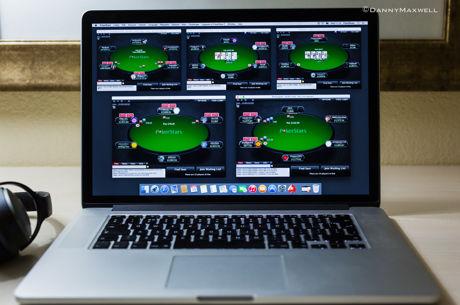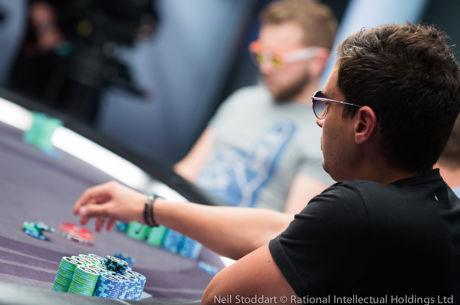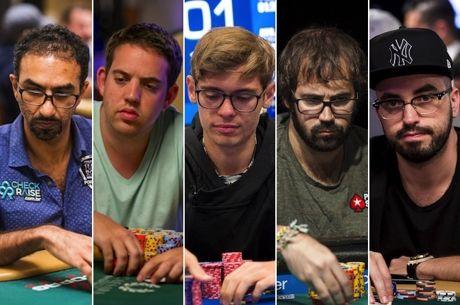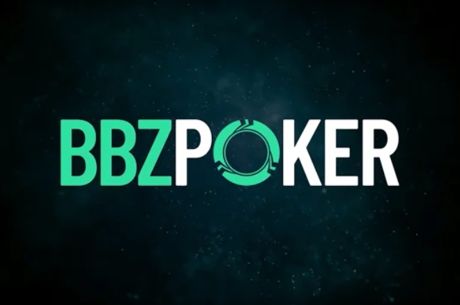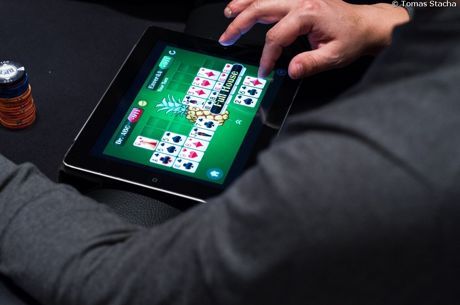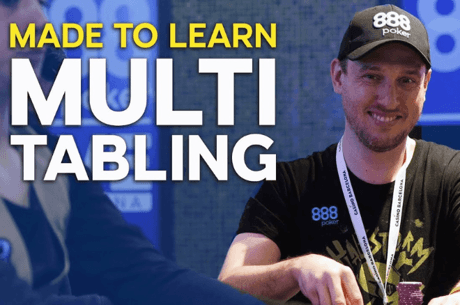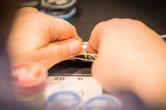Calling All the Way Down in a Hand of 100NL

Sometimes it is hard to tell if you, or another poker player, made a mistake �� even after the showdown. This is particularly true when one of you is bluff-catching in a situation when the other could have been bluffing, but wasn't actually bluffing this time.
Occasionally it's enough simply to think of our own range and find which hands are "must" calls. But what about when we hold a hand that's a "maybe" call? Let's take a look at a real example, involving actual money and virtual cards.
The Check-Calling Begins
It's a $0.50/$1.00 cash game, six-handed no-limit hold'em played online. The hand started with a middle position raise to $3 from a regular and another regular three-bet to $8 from the next seat over.
It folded back to the initial raiser who called, and the two players saw a flop come J?10?4?. The first player checked, and the reraiser continued for $9 and was called.
The turn brought the 10?. Again the action went check-bet-call, with the bet $23 this time.
When They Bet Unexpectedly
It is easy to check-call a low flop, see an ace on the turn, and expect a bet from the initial raiser. It is a bit more confusing when your opponent bets a card that should help your range, should hurt his range, or both.
It might seem at first that the 10? on the turn would be a scare card for AxAx, KxKx, QxQx for the in-position player, or at least a deterrent to him barreling with KxQx, AxKx, and AxQx-type hands.
But in order for the out-of-position regular to have a ten, it would have to be suited. (Would the player really open and call a three-bet out of position with Kx10x-offsuit in middle position versus the cutoff?) There is only one combination of Jx10x-suited (diamonds), and two each of suited Ax10x, Kx10x, Qx10x, and 10x9x.
But it is similarly difficult for the in-position player to have a ten. After all, that player would have had to three-bet with a ten, then continuation bet middle pair when checking back with Ax10x hands would have been reasonably tempting.
So we arrive at this idea that the 10? on the turn is a better card for the out-of-position player, but maybe not by that much.
When the in-position regular continues to barrel, however, the player is really ratcheting up the leverage. The bet is signaling a threat to shove the river.
If the out-of-position player holds KxQx, what is he to do? Will he always be good check-calling all in on an ace or nine river? Not always �� and he might end up check-folding a king or a queen river if he check-calls now. Or check-calling when beat.
One solution he could arrive at is to check-shove all-in with trips, like 10x9x-suited, and some of those stronger bluffs like the nut-flush draws and KxQx. This way he can get around check-folding KxQx on the turn and get around check-calling with it. He can still have strong hands on the river �� just not as many. He can check-call the turn with his full houses, J?10?, JxJx, and 4x4x. These check-calls will protect his weak top pairs, AxJx-suited, KxJx-suited, and QxJx-suited from being bluffed relentlessly.
River Reality
In the actual hand, the out-of-position player check-called the turn, then a total blank 3? arrived on the river, making the board J?10?4?10?3?. He checked again, and this time faced a 100-big blind shove from his opponent.
To find bluffs for the in-position player shoving the river, we need to look at both the river and the turn.
Would he not slow down with hands like AxKx, AxQx, and KxQx on the turn? Could not 6?5? simply take the free card, not expecting much turn fold equity? After all, what does the calling player fold on the turn that he called on the flop? AxQx, 9x8x-suited, and Qx9x-suited? Not a huge portion of hands, but some portion.
It would seem that the in-position regular can here value shove pocket queens and better for value.
Sometimes he will run into a slow played monster, but a lot of times he'll be putting bluff catchers like AxJx to the test. Knowing the frequency with which your opponent fires twice in three-bet pots or bets the turn in general can help us solve this situation.
When playing online poker, many players will be underbluffing this river spot and under value shoving as well, content to check back with pocket kings in a big pot, when they could go for max value against AxJx. If you think your opponent is an exception �� one way or the other �� you can hero call with QxJx-suited or hero fold QxQx.
In the actual hand, the regular under fire pressed the call button for the fourth time this hand, showing Q?J? for a very marginal bluff catcher. He got bad news �� his opponent's 10?8? had meant that ten on the turn had him drawing almost dead.
The Turn in Retrospect
Of course the turn bet from the in-position player now makes a lot of sense �� he had a very strong hand.
On the flop one might argue that he should have checked back and played pot control. After all, by betting the flop how many worse hands does he expect to call and how many better hands does he expect to fold?
The answer to that question is if the cutoff checks back the flop, how many turn and river combinations do you think he'll be able to call down on if his opponent fires heavily, twice? A ten with no overcard for protection is going to be guessing on any runout that doesn't include a ten or an eight �� so Ax10x and 10x8x are by no means the same here.
We can't say for certain that the call down with top pair no kicker was bad, per se. If the cutoff would not have shoved kings or aces for value (and the out-of-position player knew that), he had a right to be suspicious.

